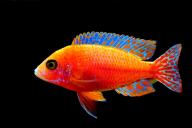When choosing apple varieties to plant, gardeners pay attention not only to the size of a tree or the taste of its fruits, but also pests.
Some apple varieties tend to be way more prone to pests, so they can require lots of work and maintenance.
But why do some apple varieties attract more pests?

Sweetness and Aroma
Sweeter and more aromatic apple varieties tend to attract pests because insects and animals are drawn to the sugars and scents produced by the fruit.
Soft Skin
Apples with softer skin are more vulnerable to pests.
Insects can easily pierce or lay eggs in the softer skin, making these varieties more prone to infestations.
Thin Skin
Apples with thin skin are less protective against pests. Thicker-skinned apples create a barrier that makes it harder for insects to reach the flesh.
Ripeness
Ripe apples emit a stronger scent and are softer, making them more appealing to pests.
Insects are attracted to the fruit when it's at its tastiest and most vulnerable state.
Color
The color of apples can influence pest attraction.
Some pests are attracted to specific colors, so the hue of the apple can make it more or less appealing to certain insects.
Disease Resistance
Some apple varieties are more resistant to diseases and pests, while others may lack natural defenses.
Pests are more likely to target apples that don't have built-in protection.
Genetic Factors
The genetic makeup of apple varieties plays a role. Some apples may have inherited traits that make them more or less attractive to pests.
Local Pest Populations
The prevalence of specific pests in a particular region can impact which apple varieties are more susceptible.
Local pest populations may favor certain types of apples over others.













